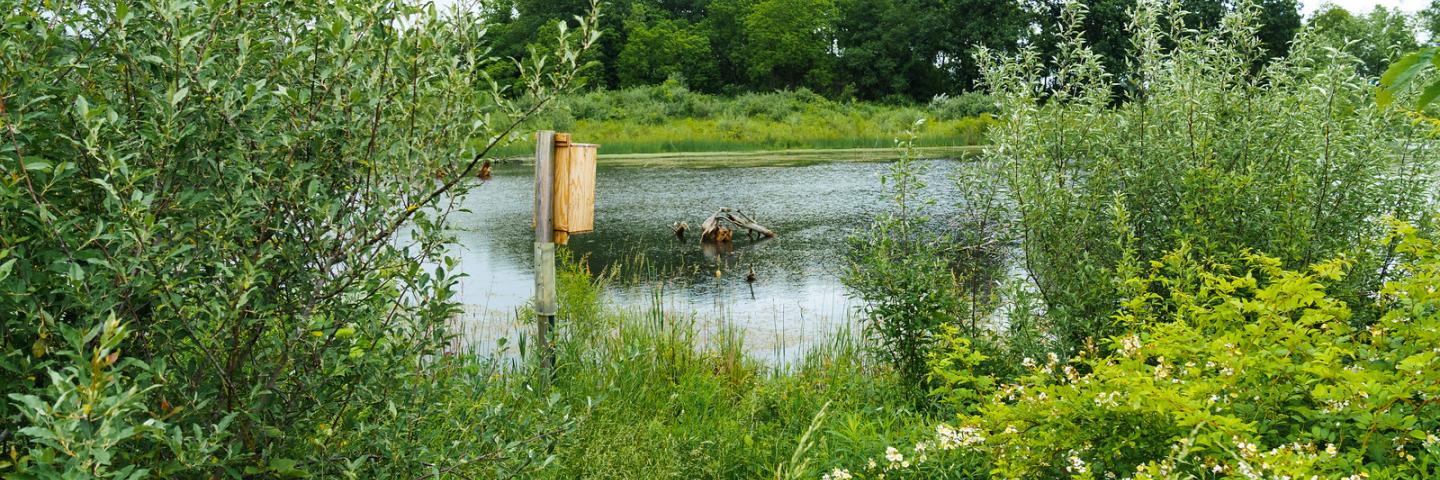
The Wetland Mitigation Banking Program (WMBP) is a competitive grants program that supports the development and establishment of wetland mitigation banks to make credits available for agricultural producers.
Latest Information
June 12, 2024 Webinar for Interested Applicants
Mitigation Banking in an Agricultural Context
Wetland mitigation banking is the restoration, creation or enhancement of wetlands for the purpose of compensating for unavoidable impacts to wetlands at another location. Wetland mitigation banking is commonly used to compensate for wetland impacts from development, but it also used for impacts from agriculture.
Conservation compliance provisions for wetlands, commonly called Swampbuster provisions, aim to remove certain incentives to produce agricultural commodities on converted wetlands. Producers seeking benefits through most USDA programs must meet conservation compliance by filing form AD-1026, affirming they will not drain, dredge or fill wetlands in order to grow commodity crops. In situations where avoidance or on-site mitigation is challenging, the Farm Bill allows for off-site mitigation through mitigation banking.
How Mitigation Banking Works for Farmers
Producers can buy credits from wetlands mitigation banks to compensate for the impact of lost wetlands. Wetland mitigation banks are established through the restoration, creation or enhancement of wetlands. When a mitigation bank is established, the landowner retains ownership and use of the property, while a conservation easement protects the wetlands from incompatible degrading activities. The size and scope of the wetland restoration, creation or enhancement activities determine the quantity of credits available for sale. The price of credits is negotiated between the buyer and seller with no involvement by USDA.
How Mitigation Banks Are Developed
Bank sponsors develop mitigation banks. A bank sponsor is any individual or entity that develops wetlands for use in wetland mitigation banking. The sponsor is responsible for the cost of wetland development, as well as the long-term maintenance of the wetland bank to ensure that it continues to function as designed in the future. Through WMBP, bank sponsors can compete for NRCS funding to support the costs of developing and establishing a mitigation bank for use by agricultural producers.
Credits are determined using a functional assessment procedure that evaluates individual wetland functions. As the credits are sold, they are subtracted from the bank until all the available credits are purchased.
Mitigation Banks and Land Use
Wetland preservation generally does not qualify for credit generation as simply protecting an existing wetland does not mitigate the replacement of lost wetland acres. Bank sponsors should consider the credit demand in local areas to determine whether establishment of a wetland bank is warranted.
Under WMBP, former wetlands restored to their original condition provide the best opportunity for success in generating wetland mitigation bank credits. Long-term success and stability are important site considerations, since the bank sponsor is required to provide the long-term site maintenance for the bank to ensure it continues to function as designed.
Types of Wetlands
Restored wetlands are typically easier and less expensive to develop. In many cases, land is reverted to its original wetland state through an alteration in hydrology.
Enhanced wetlands are defined by activities that accentuate one or more specific wetland functions for specific purposes. The depth and duration of ponding may be altered to support wildlife or different vegetation encouraged to improve water quality. Typically, these modifications of the landscape and hydrology are more expensive to develop and maintain as compared with restored wetlands.
Created wetlands are commonly the most difficult and costly to develop and maintain. These are wetlands developed in a landscape and on soils which did not originally support a wetland. As a result more elaborate engineering design, installation of structures, and/or water pumps may be necessary to develop and maintain created wetlands.
Program Contact
Ready to get started?
Contact your local service center to start your application.

